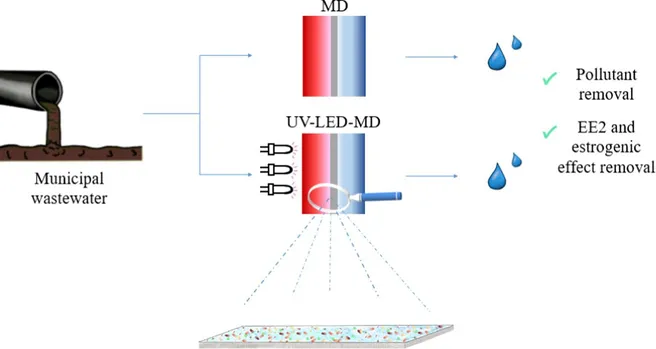This study aimed to manufacture a hybrid UV-LED and membrane distillation module (UV-LED-MD) for the first time. Its performance in wastewater post-treatment was evaluated, and the effect of UV-LED on membrane fouling was investigated. The removals of 17α-ethynylestradiol and estrogenic activity in the hybrid module were also assessed. In preliminary tests, flux tended to stabilize at an average value of 3.1 and 3.5 L m-2 h-1 in MD and UV-LED-MD, respectively. When treating wastewater, MD and UV-LED-MD presented similar performances. P-PO43- removal was higher in UV-LED-MD. The hybrid module and MD had similar performance in hormone removal efficiencies (>97.7%) and estrogenic activity removals (>99.0%). The membrane from UV-LED-MD was less fouled according to visual inspection. However, the UV-LED-MD membrane exhibited a greater flux decline. The fouling layer in UV-LED-MD was much less adhered to the membrane. The lower adhesion of the fouling to the membrane means a great practical operational advantage, which justifies further investigations into the UV-LED and MD coupling.
